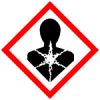The Producer must not use any pesticide listed in:
i. Annex A and B of the Stockholm Convention; or
ii. Annexes of the Montreal…
The Producer must not use any pesticide listed in:
i. Annex A and B of the Stockholm Convention; or
ii. Annexes of the Montreal…
Chemicals that are banned by the Bonsucro…

Toxic if swallowed

Toxic in contact with skin

Causes skin irritation

Causes serious eye irritation

Toxic if inhaled

May cause respiratory irritation

May cause cancer (state route of exposure if it is conclusively proven that no other routes of exposure cause the hazard)

Toxic to aquatic life with long lasting effects
The Producer must not use any pesticide listed in:
i. Annex A and B of the Stockholm Convention; or
ii. Annexes of the Montreal…
Chemicals that are banned by the Bonsucro…

Toxic if swallowed

Toxic in contact with skin

Causes skin irritation

Causes serious eye irritation

Toxic if inhaled

May cause respiratory irritation

May cause cancer (state route of exposure if it is conclusively proven that no other routes of exposure cause the hazard)

Toxic to aquatic life with long lasting effects